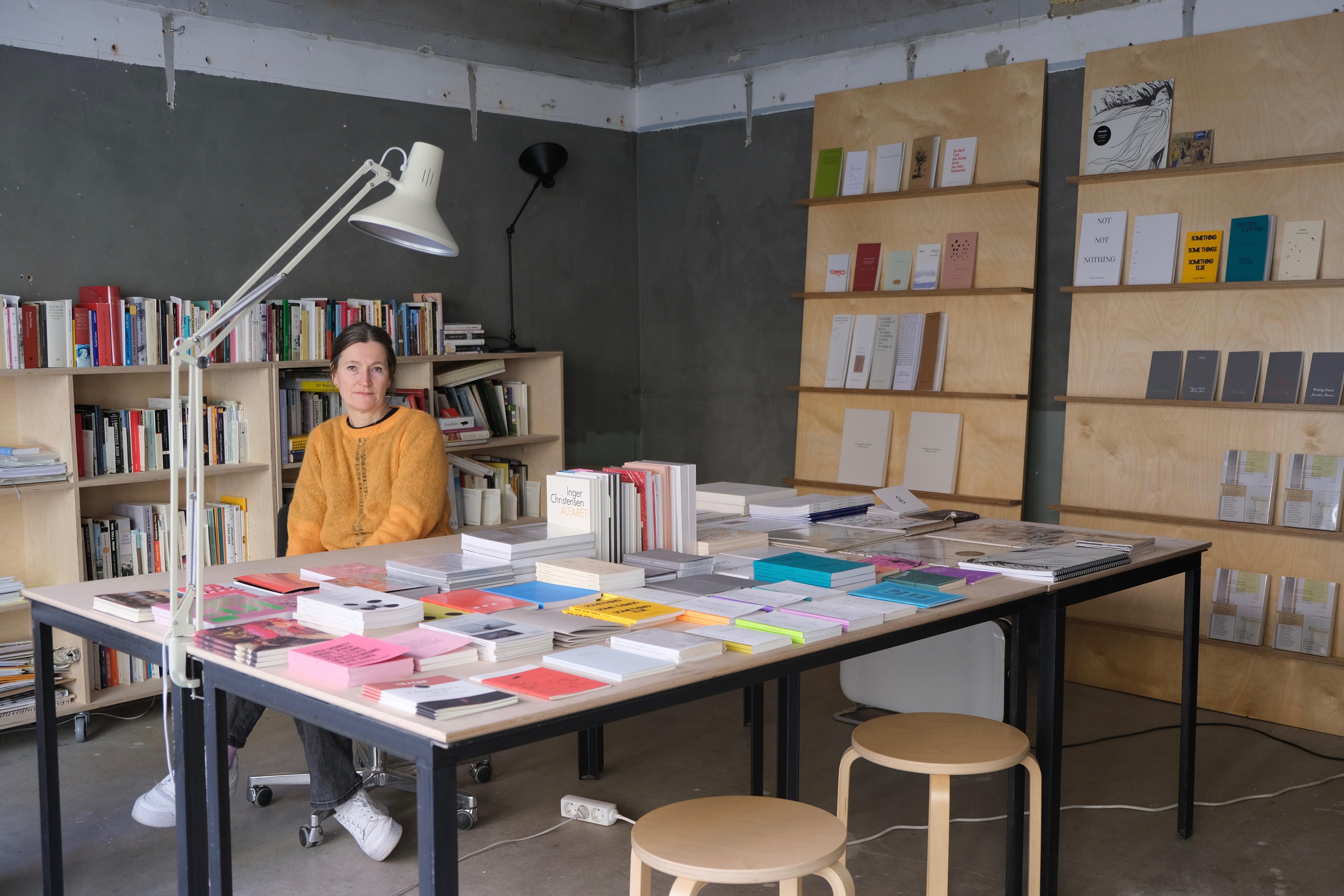Three questions for Mette Edvardsen

- Photo Anna Røed
Mette Edvardsen has presented her works at Black Box teater for a number of years. In her latest work Livre d'images sans images, she continues the writing process she has developed over the past ten years. With the idea of choreography as writing, she has created a number of performances where she works with language as material and where the voice is central.
In your work, you are probably as concerned with what we humans cannot see as with what we can see. Can you tell us a little more about your interest around our ability to imagine something?
The ability to imagine something is for me the inner essence of performing arts. What we see, the visual expression, often gets a lot of attention, but for me, dance and performing arts are not primarily a visual art form. Other senses such as listening, feeling, sensing and imagining are part of how we experience and see. I would like to add memory here, as a sensory organ, which is also part of how we experience and imagine something. But even if I don't work visually, inner images arise, and thoughts are set in motion, at least that is the intention. And exactly how we do this, which inner images are created, what moves us, is very different and completely personal. I always try to create spaces that give space, that not everything is completed and thought out, that there is still room for the audience to think and feel for themselves. I also work with time. And then it may not be the case that we can completely separate the senses, they always work together. When one of the senses weakens, we reinforce or compensate with another. These qualities, that we can see and imagine something, that we can think, feel and create inner images, are necessary qualities - both in a large perspective and on a personal level - how to change (one's) world.
You are interested in language and the idea of choreography as writing, something you have worked on for many years. Can you tell us a little more about this and how this is incorporated into the new performance?
I think of choreography as writing. But that does not necessarily mean that I only work with text or language, it is a way of composing in time and space. For me, this space, and the time, where a performance takes place, is always the starting point for what I write.
I have worked with language (and voice) as material in several of my performances. The text I then write is both the words I say and the actions I do, the time it takes, how I use the space, everything is integrated into the writing process. I don't write the text first and then stage it. All elements are written at the same time. For me, language has given access to other ways of both composing and creating inner images. I have worked with language in different ways, with what I can do with it, not just what I can say. There is also a dialogue between the performances, where something in one performance leads to something else, perhaps not linearly, but over time. A bit like a pollination process, while I'm working on something I want to find out, new questions and thoughts appear that are carried on through the work process. Nothing occurs in isolation, everything is in relation to something else. In the new performance we are working on now, a large, blank sheet of paper is the room we start in, and we work with different media: an LP record, on paper and performance. I still relate to language and choreography as writing, but the form is looser than before, I think. It does not hold together in the same way, which was also the idea to begin with. And there is a challenge here for us, how to work on something that doesn't quite take shape, that isn't fully written, but that exists somewhere between the thoughts, between us.

Mette Edvardsen in her studio Norma T
A solo work is often the result of a collaboration with several others. Can you tell us about how you find and work with your artistic collaborators
It is different from project to project how I find and work with my artistic collaborators. Some partners I work with over a long period of time and over several projects, others are more spontaneous. I work very myopic in my processes, and by that I mean that I actually know quite a bit about what to do beforehand, and perhaps especially in the solo performances. I don't work with a team of people around me in the studio, like a dramaturg, lighting, sound, producer, costume - I don't know what I need until later, during the process. The collaborations with graphic designers and lighting also vary when in the process we come together. For Livre d'images sans images, the process started with my daughter, Iben, at home, initially with audio recordings and conversations. Then there was a pandemic, and while the project was canceled and postponed a number of times, we continued to exchange and work. During this period, the collaboration also changed, in an organic way, to become something we do more together. And because the process was so often interrupted, it meant that we worked more alone than I had imagined from the beginning. Both Bruno Pocheron (light) and Michaël Bussaer (graphic design) I have worked with a lot before. And it has been incredibly nice during this period where we have worked so much at a distance, because we already have a language together and an understanding of each other's work.
Livre d'images sans images will be shown 8–10 June and is part of Heddadagen 2023





